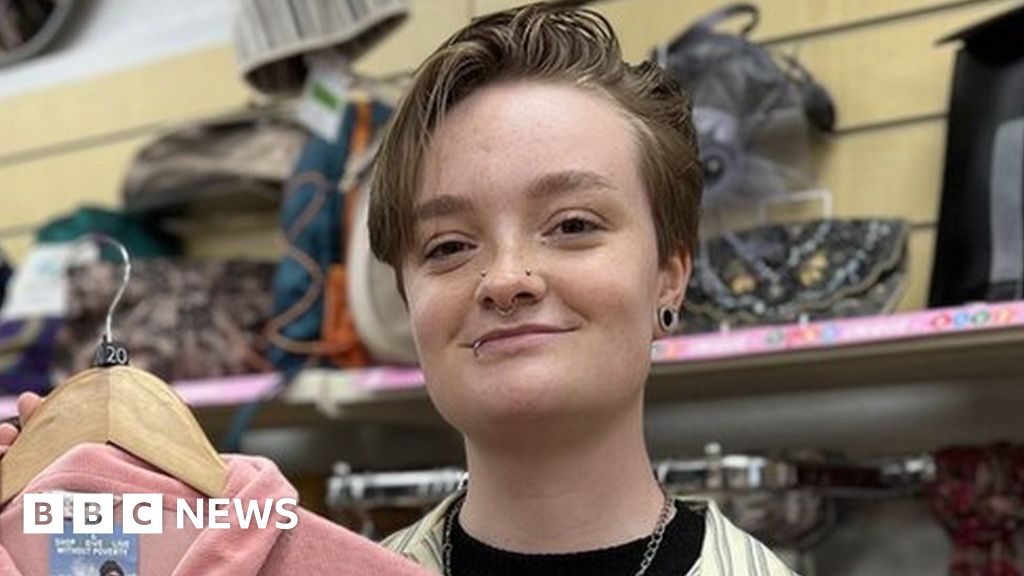The Black Friday deal-hunting is well and really underway. However, while many people are still looking for the best deals on the newest brands, people have embraced the growing” thrifting” tendency, which has led to a boom in second-hand sales. What are the causes, though? To find out, the BBC spoke with a number of” thrifty” customers.
Quick trend is bad for the environment, they say.

Elanor Plant has spent her entire life purchasing used clothing.
She claimed that her mother helped her understand how crucial it was to discard clothing.
She remarked,” I used to find it really annoying as a kid because I did n’t want to be dragged around every shop.”
But in all honesty, she raised me well.
The Winchester-based 21-year-old graphic design student claimed that the traditional shame associated with charity shops was dissipating and that it was growing in popularity.
They range is more enjoyable and less expensive, which is fantastic when you’re a student.
Strong fashion is simply bad for the environment, so it’s nice to know that someone already has a house before you give it another chance.
Income from charity shops have increased by 10 % in recent months, according to the Association for Charity Retail, which represents 470 charity members from across the UK.
According to the party, sustainability is one of the main causes of this increase.
It’s not being dumped in a waste.

Steph Hettle, a primary school teacher, said she could afford to buy fresh outfits but preferred to shop at secondhand stores.
The 27-year-old from Southampton said,” I quite like that I am helping the culture.”
” I am keeping things reused because they are n’t basically going to the landfill, and I believe that’s important.”
So-called “fast fashion” frequently results in subpar working conditions in different nations and contributes significantly to greenhouse gas, water, and air pollution. It also produces dangerous amounts of waste.
According to the UN, the fashion industry accounts for between 2 % and 8 % of all greenhouse gas emissions worldwide.
It’s a duty that belongs to my creation.

Molly Billingsley, 29, of Thame, Oxfordshire, made the decision to begin buying and selling used clothing a few years back.
I came to the realization that I buy a lot of things, wear them thrice, and then what happens to them. It is kept in a closet.
However, it’s no good for the environment or for me economically.
She thinks that people are becoming more conscious of the importance of responsible trend and climate change.
” We must all work together.
It is a role for my creation, above and below, because” We know what’s happening in the world, we know the changes that we need to create.”
” Gen Z are bringing about the transform.”

Charity advertising manager at Oxfam Zara Canfield made the decision to wait a year before purchasing new clothing in 2019.
She claimed that after four years, she has continued to uphold her promise and has observed numerous another young citizens visiting Oxfam to shop for used items.
The 30-year-old claimed that Gen Z is to blame for the shift in consumer behavior.
She stated,” I do believe that climate change is currently at the top of people’s thoughts.
People are looking for little ways to change their habits, and buying second-hand is a really small and simple way. This is what drives people’s shopping routines.
There is a reaction against speedy style.
 Association for Charity Retail
Association for Charity RetailThe Association for Charity Retail (CRA) has recorded 10.8% growth in like-for-like in-store income in 4,309 charity shops between July and September 2021 and the same months in 2022.
According to the organization, 57 charities representing 4, 385 stores also reported an 8.5 % increase in like-for-like in-store income between April and June 2023 over the same time last year.
According to Robin Osterley, the CRA’s chief executive officer, over the past five years, charity shops have benefited especially from” sustainable visitors.”
He continued,” I believe there is a growing backlash—if that’s the right word—against the whole fast fashion item.
” We make too much things, and I think people are starting to realize that a lot of fast fashion results in truly increased over-making of apparel.”
” It’s an essential solution,” she said.

According to Sass Brown, a program leader in green fashion at Kingston University, more people are purchasing used clothing than first-hand items worldwide.
The contemporary fashion system of consumption and discarding subpar clothing, she said, was the biggest issue. She added that one of the many solutions that may help address the issue is second-hand shopping.
It’s really a significant part of it because, if the scale of consumption and waste is the root of our issue, therefore prolonging the use of clothing is an excellent way to counteract the effects of discarding it. Therefore, it is a crucial one, she said.
She stated that while it is anticipated that the second-hand market will continue to expand, more options to climate change will also be required.


